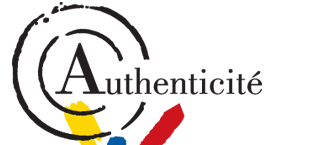 Valuation of a French Charles X period gaming table in our next auction
Valuation of a French Charles X period gaming table in our next auctionLe Floc'h auction house in Paris and Saint Cloud, in collaboration with our experts specialized in free valuation and free appraisal will auction a French Charles X parquetry game table, Thursday 23rd of January in Saint Cloud.










Our teams in London and Paris are available to meet your needs whether you want to buy, sell or know the value of your works of art.
News releases

For about ten years, the decorative arts from the late nineteenth century exit the oblivion. The names of the leading manufacturers of furniture and works of art were rediscovered and their exceptional creations characterized by the influence of the Universal Exhibitions and development industry applied to art.
The background ivory parquetry inlay patented by the Veuve Duvinage meets all of these elements and the price of this particular production peaked.
The veuve Duvinage
In 1799, Alphonse Giroux opened a shop in Paris where he sells paintings, drawings, prints, furniture and objects. From 1833, his sons are at his side and in 1838, Alphonse-Gustave Giroux succeeded his father. He developed the activity in particular furniture which earned him a silver medal at the exhibition of the products of French industry in 1839.
In 1867, business was taken over by Ferdinand Duvinage, It retained the signature "Alph. Giroux Paris "on works of art that are produced and sold in his shop.
In 1877, Ferdinand Duvinage died and his widow succeeded him giving birth to the "veuve Duvinage."
The house Giroux continued to prosper under her direction until its sale in 1882.
The ivory parquetry
In 1877, the veuve Duvinage patented a new type of inlaid ivory parquetry on background cloisonné which uses the principle of extreme oriental cloisonné enamels. The marquetry wood generally has a bird, cock pheasant mostly, plugged into a setting of flowers and foliage. The Japanese style of the parquetry is visible.
According to the date of registration of the patent, it seems certain that this decoration was established by Ferdinand before his death. Particularly original, it was produced only during a very short period from 1877 to 1882.
The production
Furniture and works of art covered with this marquetry known as inlay of the veuve Duvinage were executed.
If the furniture is quite rare, a cabinet today in the Musée d'Orsay and a few tables, the production was much more important for objects d'art.
Among these include in particular toilet mirrors in triptychs opening by two doors inlaid with ivory, cups, plates or planters, boxes and clocks.
You have a piece of furniture or work of art signed Giroux and/or Duvinage whether you want to sell, appraise or just have an estimation, do not hesitate to contact us confidentially and free of charge.
Cédric Henon, fine art specialist
Feel free to contact our fine art specialists if you want to appraise your works of art. We also assist you in the selling of your works of art : consultancy.


 +33 6 95 34 93 78
+33 6 95 34 93 78

